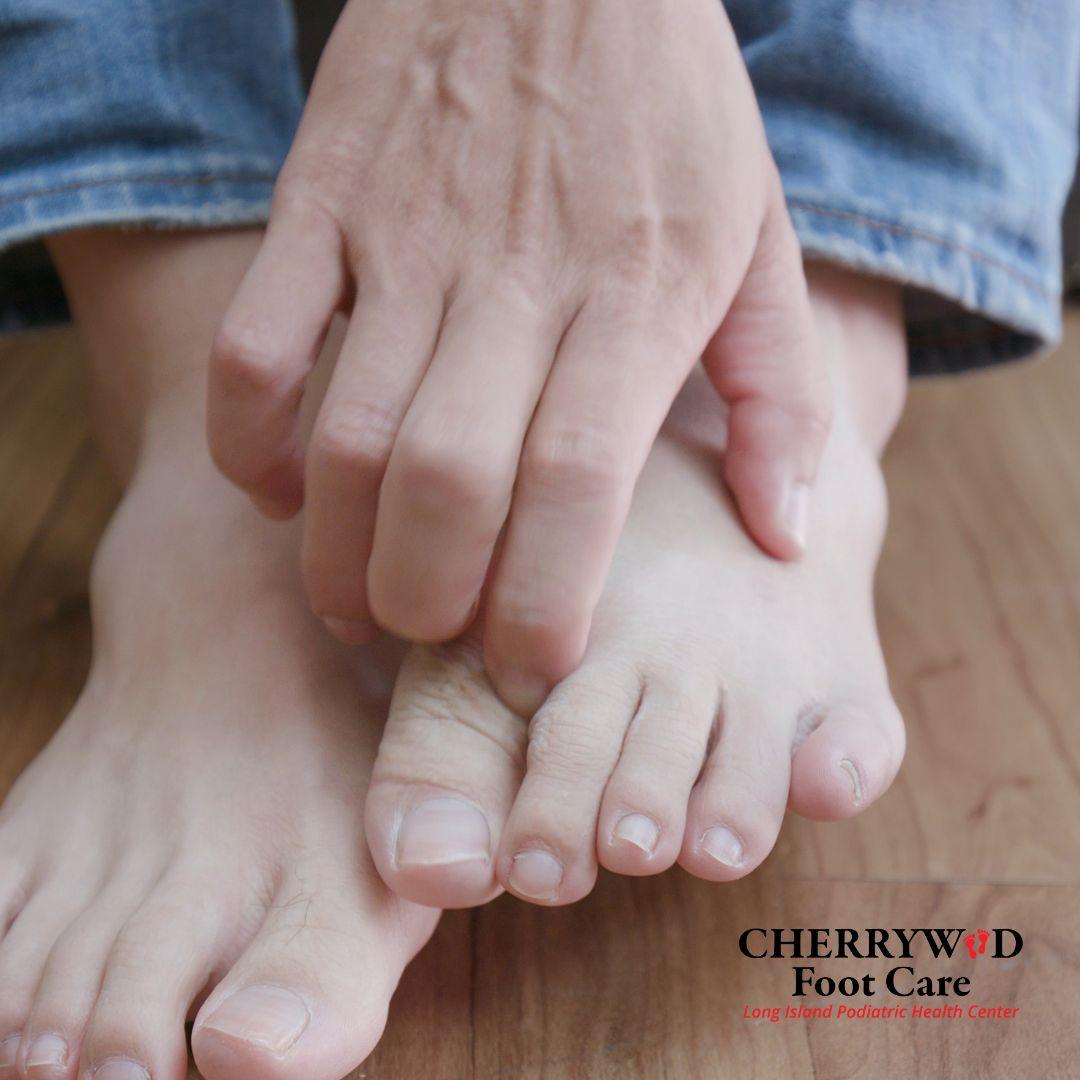
10 Jul How to Treat and Prevent Athlete’s Foot During Summer
Athlete’s foot is a prevalent fungal infection that targets the skin on the feet. The warm and humid weather of summer provides perfect conditions for the fungus to grow and require foot care on Long Island. Symptoms can vary from slight itching and redness to more severe issues like cracked and peeling skin. Knowing how an athlete’s foot develops and spreads is essential for effective treatment and prevention.
Causes and Symptoms
Athlete’s foot is caused by dermatophytes, a group of fungi that thrive in warm, moist environments. Common places where the fungus can be contracted include public showers, swimming pools, and locker rooms. The fungus spreads through direct contact with contaminated surfaces or through contact with an infected person.
Recognizing Symptoms
The symptoms of athlete’s foot can vary, but the most common signs include:
- Itching and burning: Especially between the toes.
- Redness and scaling: The skin may appear red and flaky.
- Cracking and peeling: Severe cases can lead to painful cracks and peeling of the skin.
- Blisters: Small blisters may form, which can become infected if not treated properly.
Effective Treatment Options
- Over-the-Counter Treatments – For mild cases of athlete’s foot, over-the-counter (OTC) antifungal creams, sprays, or powders can be highly effective. These products typically contain active ingredients like clotrimazole, miconazole, or terbinafine. It’s important to follow the instructions on the packaging and continue treatment for the recommended duration, even if symptoms appear to improve.
- Prescription Medications – In more severe cases, a podiatrist may prescribe stronger antifungal medications, which could include topical treatments or oral medications. Commonly prescribed oral antifungals include itraconazole and fluconazole. These medications work systemically to eliminate the infection.
Preventing Athlete’s Foot During Summer
Maintain Good Hygiene
Maintaining proper hygiene is the first line of defense against athlete’s foot. Here are some tips:
- Wash feet daily: Use soap and water, making sure to clean between the toes.
- Dry thoroughly: Ensure feet are completely dry before putting on socks or shoes, as moisture fosters fungal growth.
- Use antifungal powders: Sprinkling antifungal powder in shoes and on feet can help keep them dry and reduce the risk of infection.
Choose the Right Footwear
The choice of footwear is critical in preventing athlete’s foot:
- Breathable materials: Opt for shoes made of materials that allow air circulation, such as canvas or leather.
- Change socks frequently: Wear clean, dry socks made of moisture-wicking materials like cotton or wool. Change socks if they become damp from sweat.
- Avoid tight shoes: Tight shoes can trap moisture and create a breeding ground for fungi.
Take Precautions in Public Areas
Public areas like pools, gyms, and locker rooms are hotspots for the fungus:
- Wear flip-flops or sandals: Always wear protective footwear in communal showers and around swimming pools.
- Avoid sharing: Do not share towels, socks, or shoes with others, as this can spread the fungus.
When to See a Podiatrist
While many cases of athlete’s foot can be managed at home, certain situations require professional medical attention:
- Persistent infection: If symptoms do not improve with OTC treatments.
- Severe symptoms: Such as extensive cracking, pain, or secondary bacterial infections.
- Recurring infections: Frequent bouts of athlete’s foot may indicate an underlying issue that needs addressing.
Foot care on Long Island can provide a thorough examination, diagnose the extent of the infection, and prescribe the most effective treatment plan.
Contact Us For Foot Care on Long Island
Athlete’s foot is a common but manageable condition, especially during the summer when the risk of infection is higher. By maintaining good foot hygiene, choosing appropriate footwear, and taking precautions in public areas, you can significantly reduce your risk of developing this irritating condition. For those already affected, a combination of OTC treatments, home remedies, and professional medical advice can effectively eliminate the infection.
For more comprehensive tips and information on managing athlete’s foot and other foot-related issues, contact Cherrywood Foot Care today!

